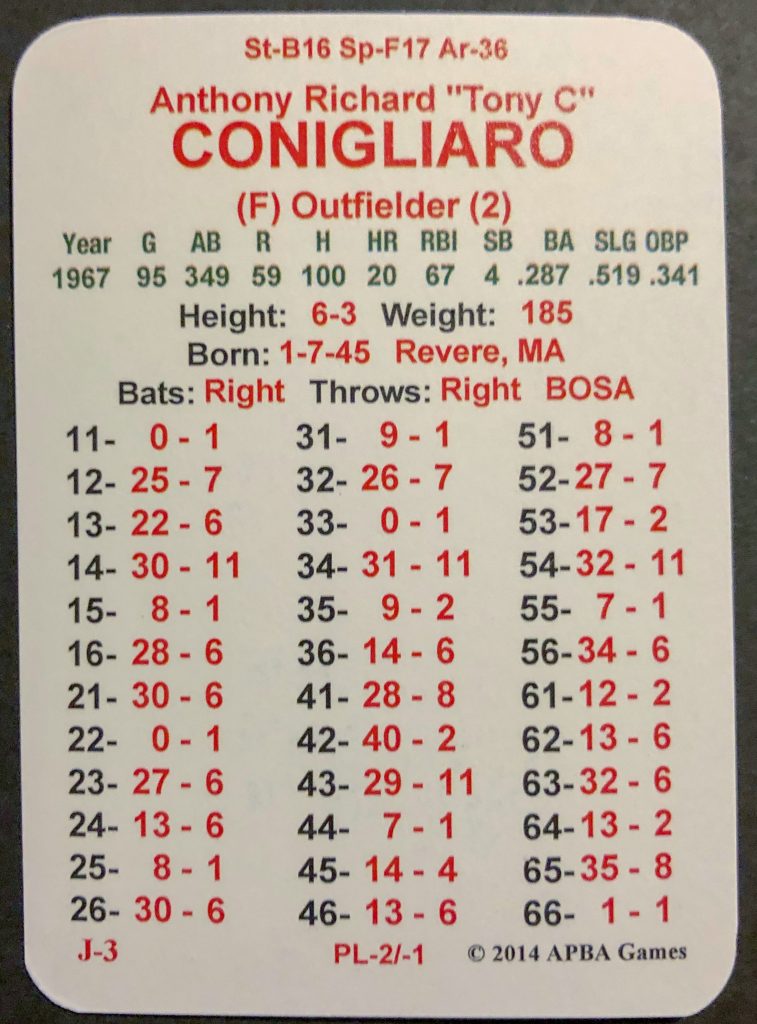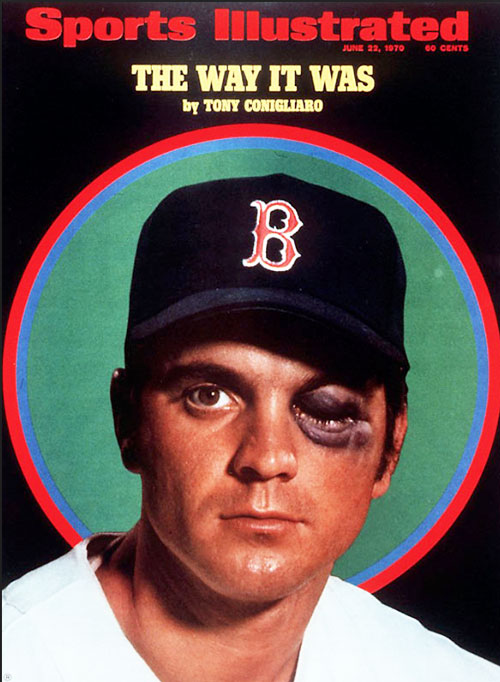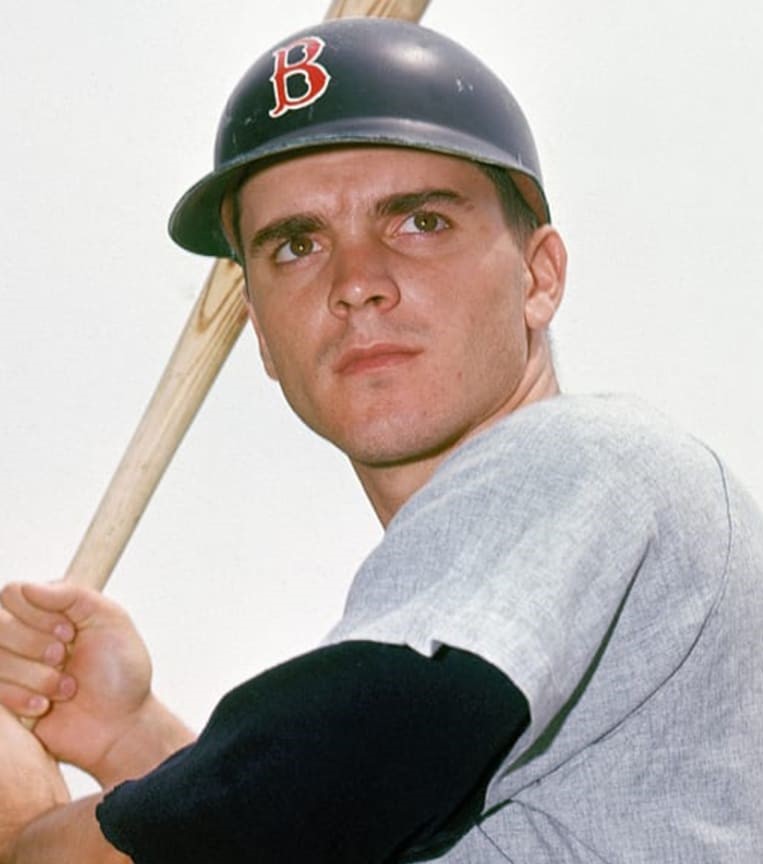
Since 1990, Major League Baseball and the Boston Red Sox have given the Tony Conigliaro Award annually. The honor is presented to a player who best “overcomes an obstacle and adversity through the attributes of spirit, determination, and courage that were trademarks of Conigliaro.” There have been some inspiring recipients of the Tony Conigliaro Award starting with Jim Eisenreich in 1990. Names like Jim Abbott, Bo Jackson, Curtis Pride, Tony Saunders, and Rich Hill grace the list.

For those not familiar with his story, Conigliaro was struck in the left cheek in an August 18, 1967 game by a Jack Hamilton fastball. The injury was severe and resulted in a fractured cheekbone, broken jaw, and damaged left retina. The event curtailed the career of the rising young star. Tony C, as he was popularly known in Boston, had reached his first All-Star game that summer after breaking into the majors in 1964. His 1964 campaign saw him hit 24 homers at just 19 years old.
The punch-in-the-gut tragedy to a player like Conigliaro really hurts the most when you consider how young he was. He was just 22 when he was hit by that pitch in 1967. Ponder for a moment that Conigliaro was the youngest player, at 20, to lead the American League in home runs when he bombed 32 in 1965. He was also the youngest player to reach 100 career round trippers when he achieved the century mark on July 23, 1967, while 22 years old. Tony C seemed destined for greatness…and then he was literally struck down. David Mendonca may have said it best when he wrote: “As much as those of any player who had not yet turned 23, Conigliaro’s achievements seemed to portend even greater things to come.”
He triumphantly came back in 1969 and 1970 with “determination and courage” to hit 20 and then 36 homers respectively. However, the eye injury eventually caught up with him. His vision began to deteriorate in 1971 and his career was sadly over by 1975. He was only 30 years old.
Tony’s 1967 APBA card projects a little better than its .287 average. With six strong numbers (0,0,0,7,7,1) and the normal assortment of 8s and 9s, it should hit closer to .303. Even though he only has one first column 1, the card does have excellent second column power with ten 1s. Interestingly, while he was only hit by pitch five times in 1967, he does have a 13-22. Perhaps this is for that fateful August day.
| Year | Age | G | PA | AB | R | H | 2B | 3B | HR | RBI | SB | BB | SO | BA | OBP | SLG | OPS | HBP |
|---|---|---|---|---|---|---|---|---|---|---|---|---|---|---|---|---|---|---|
| 1967 | 22 | 95 | 389 | 349 | 59 | 100 | 11 | 5 | 20 | 67 | 4 | 27 | 58 | .287 | .341 | .519 | .860 | 5 |
Tony Conigliaro will always be a classic what if… topic for baseball fans. What if he could have played out his career without the tragic injury. Would we be talking about him as one of the all-time greats? What if he could have played in the 1967 World Series? Would the Red Sox have pulled out a championship over the St. Louis Cardinals? It went seven games. Considering his replacements in right field were terrible in the series, one cannot help but think Tony C might have made the difference in at least one game.
That’s precisely what my brother Kevin and I are attempting our first BBW What if… replay. It’s a work in progress since we’re still trying to learn BBW on the fly too. We’d like to see if having Tony Conigliaro in the ’67 World Series lineup would’ve made the difference for the “Impossible Dream” Red Sox. You’re welcome to follow it on this blog and through our Double Take podcast and our YouTube channel. (FYI, The Red Sox won the first game 4-3.)

Or, what if the MLB made helmets with at least one earflap mandatory before 1983? Conigliaro was wearing a helmet without an earflap when he was hit in 1967. Ron Santo pioneered the earflap helmet after having his cheekbone fractured in 1966. Yet, it would take another 36 years before Tim Raines was the last player to wear a helmet without an earflap, during the 2002 season. Some changes just take too long to implement.
Tony Conigliaro might not be a traditional “game changer” in the true sense of this column. However, any player who has an MLB award named after him left a legacy worth memorializing. In the case of Conigliaro, it was overcoming obstacles and adversity through spirit, determination, and courage. Those are worthy attributes for anyone, then and now.
Recommendations: If you’re interested in more about Tony Conigliaro or the ’67 Red Sox, consider these readings:
- “Tony Conigliaro: A Career, Life Cut Tragically Short” (Bleacher Report)
- “August 18, 1967: Tony Conigliaro’s career, and life, threatened by beaning” by David Mendonca (SABR)
- “Final Card Friday: 1975 Tony Conigliaro” by Kevin Weber (APBA Blog)
- “The 1967 Impossible Dream Red Sox: Pandemonium on the Field” (SABR) by Bill Nowlin
- “Rico Petrocelli’s Tales from the Impossible Dream Red Sox” by Rico Petrocelli



